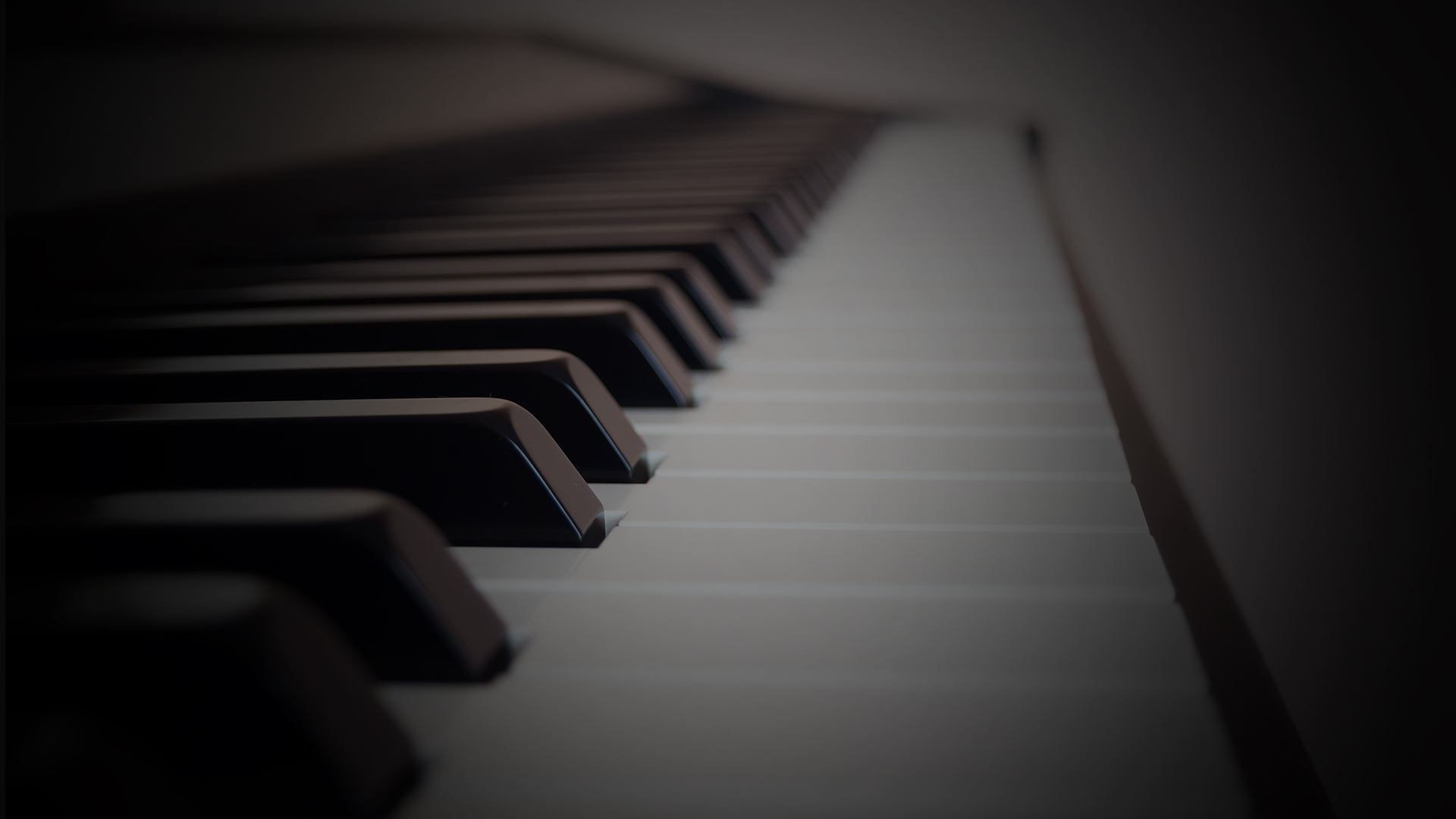The 5 Most Beautiful Piano Fills
Learning Focus
Music Style
Free Lessons
Get free weekly lessons, practice tips, and downloadable resources to your inbox!
Do you want to learn how to play beautiful piano fills, but you don’t know where to start? In today’s Quick Tip, The 5 Most Beautiful Piano Fills, Jonny May shows piano students the secret to adding exciting piano fills to ordinary pop progressions. Whether you play keyboards in a cover band or simply play to accompany your own voice, this lesson will help you take your performances to the next level. You’ll learn:
- Intro to Piano Fills
- Lesson Materials
- How to Play Pop Piano Fills
- Adjusting Piano Fills to Match Different Chords
Intro to Piano Fills
Today’s Quick Tip tutorial is probably unlike most piano lessons that you’ve experienced. For instance, piano lessons often focus on concepts like reading notes, selecting fingerings, counting rhythms, etc. Instead, this lesson is about the energy that you bring as a pianist when performing pop music.
Learning to think in terms of energy is especially important for piano students who have been reared on traditional notation-based method books. Of course, learning to read notation opens many doors for music students. Nevertheless, students who have been brought up on traditional piano methods often think of musical concepts in a manner that is (1) visual rather than aural, (2) fixed rather than fluid, and (3) rational rather than emotional. Therefore, these students have a hard time ad-libbing at the piano.
Students who have been brought up on traditional piano methods often think of musical concepts in a manner that is visual rather than aural, fixed rather than fluid, and rational rather than emotional.
By contrast, guitarist and drummers (who often play by ear) are usually more adept at embracing fluidity in performance. As such, they are known for adding fills that build musical excitement and punctuate the form. Moreover, they often perform these fills differently in each live performance. So what’s their secret? (After all, we know they’re not smarter than pianists. 😉) It’s all in their approach to the music as living and organic…something that’s just a bit less intuitive for classically-trained piano students. At least, until now!
What is a piano fill?
In popular music styles, a piano fill is a musical embellishment or decoration that a pianist adds into spaces where there are gaps in the primary melody. The purpose of a fill is to build momentum, heighten emotion or signal a transition. Although piano fills are quasi improvisatory in nature, they often draw on rapid recall of scale fragments, arpeggios and rhythmic motifs that have been learned by rote. Other names for piano fills include ornaments, build-ups, chops, licks, runs, ad-libs and extras.
Now that you have a general sense of what a piano fill is and does, let’s consider the musical context for today’s lesson.
Lesson Materials
Today’s lesson covers 5 energetic piano fills that sound amazing in contemporary pop music. However, before we breakdown the specific fills, let’s take a moment to give consideration to the overall musical context in which these fills will live and breathe. All of the notation examples that appear throughout this lesson are excerpted from the lesson sheet PDF that accompanies this lesson. If you are already a PWJ member, you can download the PDF from the bottom of this page after logging in with your membership. In addition, PWJ members can also transpose these piano fills to any key using our Smart Sheet Music.
Pop Progression
Jonny demonstrates each of the piano fills in today’s lesson within the context of the Ed Sheeran’s Grammy Award winning song, “Thinking Out Loud” (2014). In fact, Jonny’s choice of this song for this topic is rather ingenious. That’s because “Thinking Out Loud” uses a ubiquitous chord progression (Ⅰ→Ⅰ/Ⅲ→Ⅳ→Ⅴ) that appears in hundreds of other pop and soul songs of the modern era. Therefore, practicing piano fills over this progression has broad utility beyond Ed Sheeran’s hit song. For instance, other popular songs that use this same progression (or a very similar variation) include:
- “Baby Make It Soon” (1969) – Marmalade
- “Crazy Love” (1970) – Van Morrison
- “Easy Now” (1970) – Eric Clapton
- “Have I Told You Lately” (1989) – Van Morrison
- “I Can Hear Music” (1969) – Beach Boys
- “Let’s Get It On” (1973) – Marvin Gaye
- “Love Is An Open Door” (2013) – K. Bell & S. Fontana
- “People Get Ready” (1965) – The Impressions
- “Stuck On You” (1984) – Lionel Richie
- “You’re Still The One” (1998) – Shania Twain
Here at PWJ, Jonny calls this progression The Happy Progression because of its uplifting musical character. The following example is a sketch of this progression in the key of C major.
Now, let’s learn how to outline this groove with our left hand on the piano. Later in this lesson, we’ll also discuss how to modify Jonny’s 5 most beautiful piano fills to align with other chord progressions.
Left Hand Patterns
Depending on your playing level, there are several different options for how you can adapt the basic groove of “Thinking Out Loud” for piano. To that end, this section includes three different left hand accompaniment patterns for beginner, intermediate and advanced players. Keep in mind, it is not necessary to use one pattern exclusively. For instance, it’s not uncommon for players to simplify their left-hand groove a bit when their right hand plays a more active fill.
Let’s take a listen now to each left-hand pattern. The video demonstrations in this section are performed at 79 BPM, which matches the tempo of “Thinking Out Loud.”
Beginner L.H. Pattern

Intermediate L.H. Pattern

Advanced L.H. Pattern

If you’re interested in learning additional pop accompaniment patterns, then be sure to check out the following course:
🔎 Pop & Contemporary Piano Accompaniment Patterns (Beg/Int, Int/Adv)
Now that you’ve got a grip on what your left hand will play, you’re ready to move on to the heart of today’s lesson, which is learning how to play some awesome piano fills!
How to Play Pop Piano Fills
Now you’ve come to the main section of today’s lesson where we’ll breakdown how to play The 5 Most Beautiful Piano Fills that Jonny shares in today’s featured Quick Tip tutorial. Each of these licks have been constructed to match The Happy Progression represented by Ed Sheeran’s “Thinking Out Loud.”
Since many of these fills include piano runs that are quite fast, we’ve include video demonstrations in this section that are recorded at a much slower practice tempo of 50 BPM. Moreover, these demonstrations include an audible metronome that includes 8th-note subdivisions.
Fill #1 – Magic Roll Into Clusters
Jonny describes Fill #1 as the “Magic Roll Into Clusters” because it is comprised two essential components: (1) a rapidly descending Csus2 arpeggio which has a “rolling ” sound, and (2) syncopated cluster chords. Let’s take a listen…

If you’ve never been big on harmonic analysis, then you’re probably wondering, “How does Jonny know exactly which notes will work when ad-libbing a fill like this?” In fact, that’s a very important question! One way to know which notes will work over which chords is having a good grip on chord extensions. In music theory, chord extensions are all the color-notes that are available to us for each chord type.
Let’s check out another cool piano fill.
Fill #2 – Gospel Choir Chords
One myth about piano fills is that you must be able to play fast in order to add professional-sounding fills. However, fill #2 is an example of a great-sounding fill that just about any piano student can learn to execute. This fill incorporates inverted triad shapes that frequently occur in traditional gospel piano music. In addition, this fill also borrows from contemporary gospel music with its use of the slip-note technique, a modern ornament that is played somewhat like a grace note.

Let’s look at another example of a piano fill that uses slip-notes.
Fill #3 – Slip-Note Jump
The third fill in today’s lesson is called the “Slip-Note Jump” because the right hand jumps between different hand positions while playing a 16th-note line ornamented by slip-notes. A close examination of this fill reveals that most of the notes fall into either one of two shapes: G–C–D–G or C–F–G–C. It’s also important to observe that when the hand moves, each subsequent hand position initiates from the pinkie finger. Let’s take a look…

Alright, we’re ready to consider yet another remarkable piano fill.
Fill #4 – Shape Shifter
Our fourth fill, the “Shape Shifter” has a beautiful and magical sound that comes from oscillating through various triadic and quartal shapes with a rapid sextuplet rhythm. The key to executing these sextuplets is to think of playing a triplet on each 8th-note subdivision of the primary pulse. (Think: “ONE-trip-let, AND-trip-let, TWO-trip-let, AND-trip-let” and so on.)

Now let’s check out one more amazing fill that you can add to your playing!
Fill #5 – Flashy Flourish
Our final fill, the “Flashy Flourish” is a high-octane, rapidly-ascending piano run that sounds incredible! Like our previous fill, this fill uses sextuplet subdivisions of the pulse in various hand positions. Let’s take a listen…

One unique aspect of this fill is that it is asymmetrical. In other words, this fill is based on a five-note finger pattern (1–2–5–2–3) that resets on a different subdivision with each recurrence. All you need to do to recognize this fact is look for the “1” fingering in the notation above and notice that it falls on a different part of the beat each time it appears. In fact, it is this asymmetric character that contributes to the “flourishing” sound quality of this fill.
Once you get the Flashy Flourish under your fingers, be sure to check out the following Quick Tip in which Jonny demonstrates additional applications for the 1–2–5–2–3 finger pattern:
🔎 The Ultimate Piano Run – The Magic Run (Int)
In the final section of today’s lesson we’ll cover how to make tiny modifications to these licks when you encounter different chord progressions.
Adjusting Piano Fills to Match Different Chords
There’s one word that we’ve skirted around a bit in our discussion of The 5 Most Beautiful Piano Fills…that word is “improvisation.” That’s because although piano fills can be added on the spur-of-the-moment, they’re far from spontaneous. In fact, anyone who plays fills like these has spent some hours working them out. Nevertheless, piano fills are quasi improvisatory in the sense that a pro pianist often reacts without premeditation as to which particular fill to add at any given moment. Furthermore, an experienced professional can even modify these fills on the spot to match different chord progressions. In this section, we’ll help you understand the type of thinking that goes into making these harmonic adjustments.
Fill #1 – Original Example
Let’s start by reviewing and reconsidering Fill #1, the “Magic Roll Into Clusters.”

Notice that this fill employs a Csus2 chord shape (C–D–G) over the C major triads in bar 1. Now, let’s examine Fill #1b below, which is a modified version for the progression Am→F→C→G.
Fill #1b – Modified Example
If we encounter a progression like Am→F→C→G (ⅵ→Ⅳ→Ⅰ→Ⅳ), we can play a very similar “Magic Roll Into Clusters.” However, we’ve adjusted the primary shape in bar 1 to an Fsus2 shape (F–G–C) to match the F major triad. In the same way, the syncopated cluster chords in the first half of bar 2 are also modified to better match C major.

As you can see, a different chord progression doesn’t require a brand new set of fills. Instead, just a few tiny modifications are needed. Therefore, you’re bound to get plenty of mileage out of the beautiful piano fills that you’ve taken the time to consider in today’s lesson.
Conclusion
Congratulations, you’ve completed today’s lesson on The 5 Most Beautiful Piano Fills. With a bit of work in the practice shed, you’ll be ready to match the energy and spontaneity of any moment with breathtaking piano fills!
If you enjoyed today’s lesson, then you’ll love the following PWJ resources:
Courses
Pop Piano Learning Tracks
Would you like to comment on this lesson?
Visit this Quick Tip on YouTube
 Writer
Writer
Michael LaDisa
Michael LaDisa graduated from the University of North Texas with a major in Music Theory & Composition. He lives in Chicago where he operates a private teaching studio and performs regularly as a solo pianist. His educational work with students has been featured on WGN-TV Evening News, Fox 32 Good Day,...
More Free Lessons
These are the 5 core reasons why students struggle to make their chords sound interesting.
This is one of the most powerful exercises to help you develop your ears to play anything you hear.
Check out this pop contemporary style Hark the Herald with gorgeous chords and gospel embellishments.
Looking for downloads?
Subscribe to a membership plan for full access to this Quick Tip's sheet music and backing tracks!
Join Us
Get instant access to this Quick Tip and other member features with a PWJ membership!
Guided Learning Tracks
View guided learning tracks for all music styles and skill levels
Progress Tracking
Complete lessons and courses as you track your learning progress
Downloadable Resources
Download Sheet Music and Backing Tracks
Community Forums
Engage with other PWJ members in our member-only community forums
Become a better piano player today. Try us out completely free for 14 days!



